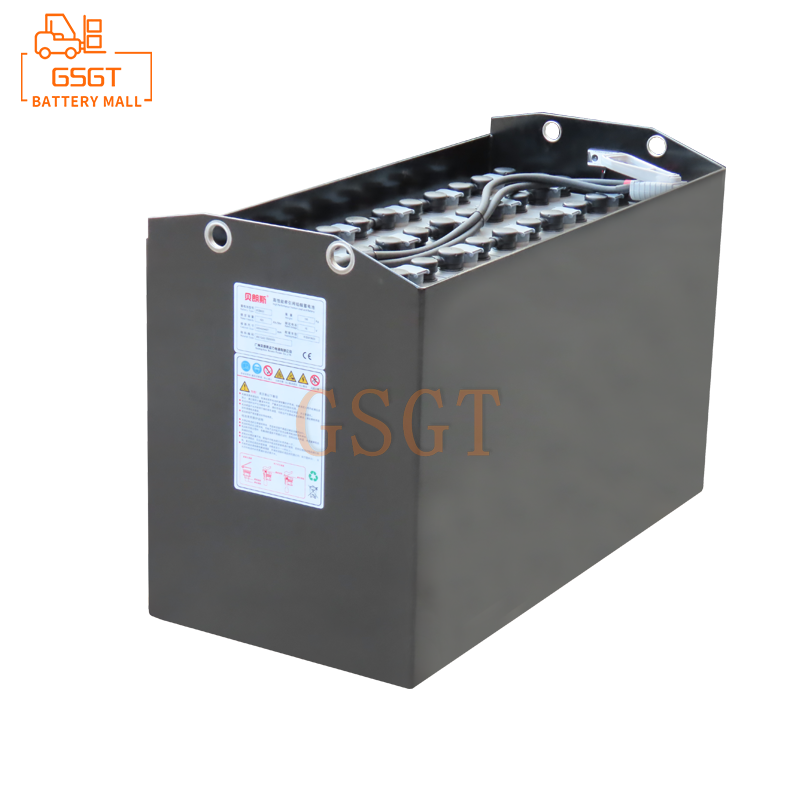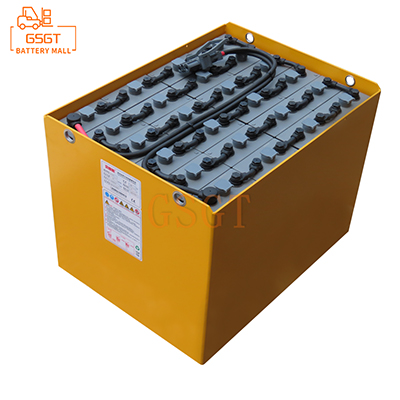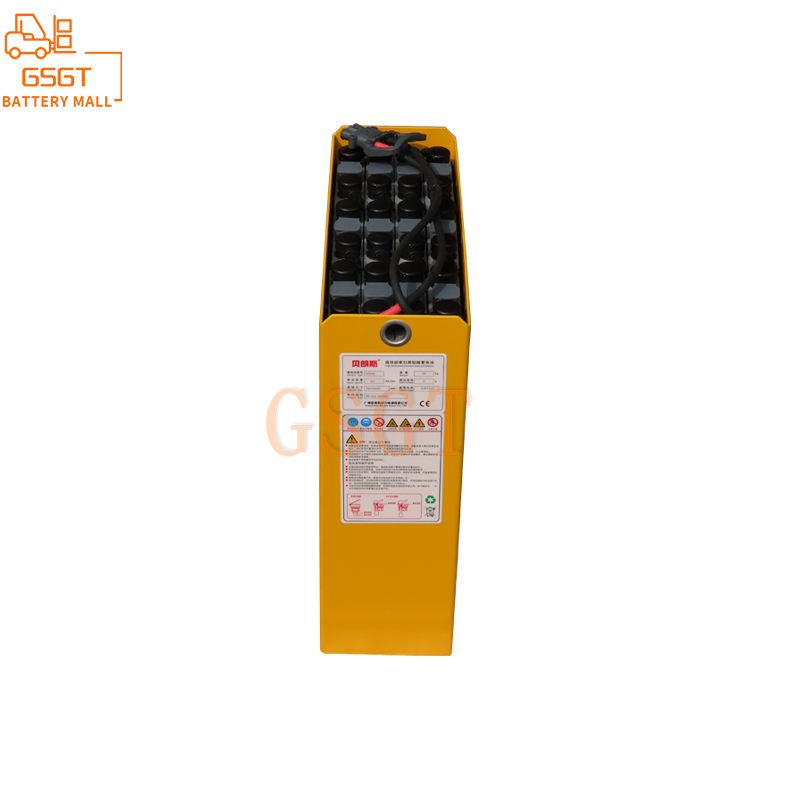Time:2025-04-24 09:39:06
Browse:611
Abstract
This paper deeply explores the capacity testing methods of lead-acid batteries in forklifts, analyzes in detail the principles, operation processes, advantages and disadvantages of various testing methods, and proposes a series of effective accuracy improvement strategies in view of the factors affecting the testing accuracy. It aims to help forklift users, maintenance personnel and related enterprises more accurately grasp the capacity status of lead-acid batteries, manage and maintain the batteries reasonably, extend their service life, reduce operating costs and improve the operational efficiency of forklifts.
1. Introduction
Forklifts, as important handling equipment in logistics, warehousing and other fields, are mostly powered by lead-acid batteries. The capacity of lead-acid batteries directly affects the working hours and operational efficiency of forklifts. Accurately testing the capacity of the battery is of great significance for timely grasping the performance status of the battery, reasonably arranging the forklift usage plan, and conducting maintenance and replacement in advance. However, at present, in the process of testing the capacity of lead-acid batteries in forklifts, there exist problems such as unscientific testing methods and inaccurate testing results, which seriously affect the normal operation and management of forklifts. Therefore, it is of great practical significance to study the capacity testing methods and accuracy improvement strategies of lead-acid batteries in forklifts.
2. Method for Testing the Capacity of Lead-Acid Batteries in Forklifts
(1) Constant Current discharge method
1. ** Principle ** : Under a certain ambient temperature, a lead-acid battery is discharged with a constant current until the terminal voltage of the battery drops to the specified terminal voltage. The discharge time is recorded, and the capacity of the battery is calculated using the formula "Capacity = Discharge current × Discharge Time".
2. ** Operating Process **
First, fully charge the battery and let it stand for a period of time to ensure that the temperature and concentration of the electrolyte inside the battery are uniform.
Then, select an appropriate constant current discharge device and set the discharge current according to the rated capacity of the battery.
Start the discharge process and simultaneously use a high-precision voltage measuring instrument to monitor the terminal voltage of the battery in real time.
When the terminal voltage of the battery reaches the specified terminal voltage, stop discharging immediately and record the discharge time.
3. Advantages and Disadvantages
- Advantages: The test results are relatively accurate and can truly reflect the discharge capacity of the battery under constant load. The testing method is simple and easy to understand, convenient to operate, and has relatively low requirements for equipment.
Disadvantage: The testing time is relatively long, usually taking several hours or even longer, which affects the normal use of forklifts. During the discharge process, a large amount of heat is generated. If the heat dissipation measures are improper, it may affect the performance and lifespan of the battery. Repeated constant current discharge tests can cause certain damage to the battery.
(2) Pulse Discharge Method
1. ** Principle ** : A pulsed current is used to instantaneously discharge the battery. By measuring the voltage response of the battery during the pulsed discharge process, the capacity of the battery is calculated based on relevant mathematical models and algorithms. During pulse discharge, the chemical reactions inside the battery occur rapidly, and the voltage will change accordingly. These changes are closely related to the capacity of the battery.
2. ** Operating Process **
First, fully charge the battery and let it stand.
Connect the pulse discharge tester and set appropriate pulse parameters, such as pulse current amplitude, pulse width and pulse interval, etc.
Start the pulse discharge test. The tester automatically collects the voltage data during the discharge process and conducts analysis and calculation.
After the test is completed, read the test result of the battery capacity from the tester.
3. Advantages and Disadvantages
- Advantages: Fast testing speed, capable of completing capacity tests in a short time without affecting the normal use of forklifts; It causes less damage to the battery and will not cause significant irreversible damage to the battery due to long-term high-current discharge like the constant current discharge method. It can be tested online without removing the battery from the forklift, making the operation more convenient.
Disadvantage: The test results are significantly influenced by various factors such as pulse parameter Settings, the accuracy of the testing instrument, and the internal state of the battery. The accuracy is slightly lower than that of the constant current discharge method. The price of the testing instruments is relatively high, which increases the testing cost.
(3) Internal Resistance Test Method
1. ** Principle ** : The internal resistance of lead-acid batteries has a certain relationship with their capacity. Generally speaking, when the capacity decreases, the internal resistance will increase accordingly. The capacity of the battery is estimated by measuring the internal resistance of the battery and combining it with the pre-established internal resistance-capacity relationship curve or mathematical model.
2. ** Operating Process **
Make sure the battery is in a normal working condition and there is no need to fully charge it.
Use a professional internal resistance tester and correctly connect the test clips of the tester to the positive and negative terminals of the battery.
Start the tester and wait for it to complete the internal resistance measurement and display the measurement results.
According to the internal resistance-capacity relationship curve or mathematical model, convert the measured internal resistance into the corresponding capacity value.
3. Advantages and Disadvantages
- Advantages: The testing process is fast and simple, enabling rapid detection. Online tests can be conducted without affecting the normal use of forklifts. It causes no damage to the battery and will not affect its performance and lifespan.
Disadvantage: The relationship between internal resistance and capacity is affected by various factors such as the production process of the battery, its service life, and the state of the electrolyte. The relationship between internal resistance and capacity varies greatly among batteries from different manufacturers and of different models. An accurate corresponding relationship needs to be established to obtain a relatively accurate capacity estimation value. The test accuracy is relatively low and can only be used as a preliminary reference method for judging the capacity of the battery.
3. Factors Affecting the Accuracy of Lead-Acid Battery Capacity Testing for Forklifts
(1) Environmental Factors
1. ** Temperature ** : The capacity of lead-acid batteries is greatly affected by temperature. When the temperature drops, the viscosity of the electrolyte increases, the ion migration rate slows down, and the chemical reaction rate inside the battery decreases, resulting in a decline in the battery capacity. When the temperature rises, although the rate of chemical reactions increases, excessively high temperatures will accelerate the evaporation of the electrolyte and the corrosion of the plates, affecting the lifespan of the battery. At the same time, it will also cause deviations in the test results. Generally speaking, the optimal test temperature for lead-acid batteries is around 25℃. For every 1℃ change in temperature, the capacity changes by approximately 0.8%.
2. ** Humidity ** : When the environmental humidity is high, moisture in the air may enter the interior of the battery, affecting the concentration and performance of the electrolyte, and thereby influencing the capacity test results. In addition, high humidity may also cause corrosion of the battery casing and connection parts, increase contact resistance, and affect the accuracy of the test.
(2) Factors related to the battery itself
1. ** Electrolyte state ** : The density, liquid level and purity of the electrolyte have a significant impact on the capacity of the battery. Both too low and too high electrolyte density will affect the chemical reactions inside the battery. If the liquid level is too low, the plates will be exposed to the air, causing sulfation of the plates and reducing their capacity. Excessive impurities in the electrolyte can cause self-discharge, consume battery energy and affect the capacity test results.
2. ** Plate aging ** : As the usage time increases, the plates of the battery will gradually age, such as the shedding of active substances on the plates and sulfation, which will lead to a reduction in the effective area of the plates and a decrease in the efficiency of chemical reactions, thereby reducing the capacity of the battery. The aging degree of the plates varies, and so does the impact on the capacity test results. Moreover, the aging process is uneven, further increasing the complexity and difficulty of accuracy in the test.
(3) Factors of test equipment and methods
1. ** Test instrument accuracy ** : Whether it is a constant current discharge device, a pulse discharge tester or an internal resistance tester, their accuracy directly affects the accuracy of the test results. Instruments with lower precision may result in significant errors in parameters such as measured current, voltage, and internal resistance, thereby causing inaccurate capacity values obtained through calculation.
2. ** Test Method Selection ** : Different test methods are applicable to different scenarios and requirements. If an inappropriate testing method is chosen, such as the constant current discharge method when quick results are required, or the internal resistance testing method when high accuracy is demanded, it may lead to the test results not truly reflecting the capacity of the battery. In addition, whether the operation process of the test method is standardized will also affect the accuracy of the test results, such as the setting of discharge current and the judgment of terminal voltage in the constant current discharge method, and the setting of pulse parameters in the pulse discharge method, etc.
4. Strategies for Improving the Accuracy of Lead-Acid Battery Capacity Testing in ForkLifts
(1) Optimize the test environment
1. ** Temperature Control ** : When conducting capacity tests, try to place the battery in a constant temperature environment. You can use a dedicated constant temperature box or carry out the test in a room with a relatively stable temperature. If a constant temperature environment cannot be achieved, the temperature should be monitored in real time during the test process, and the test results should be corrected according to the temperature-capacity correction coefficient.
2. ** Humidity Control ** : Keep the testing environment dry and avoid conducting tests in damp weather or places with high humidity. If the environmental humidity is high, dehumidification equipment can be used to reduce the humidity. At the same time, moisture-proof treatment should be carried out on the battery, such as applying moisture-proof paint on the battery casing, etc.
(2) Strengthen the maintenance and management of storage batteries
1. ** Regularly check the electrolyte ** : Regularly check the density, liquid level and purity of the electrolyte. According to the usage of the battery, distilled water or dedicated electrolyte should be replenished in a timely manner to keep the density of the electrolyte within the specified range and the liquid level 10-15mm above the upper edge of the plates. When excessive impurities are found in the electrolyte, it should be replaced in a timely manner.
2. ** Prevent plate aging ** : Avoid excessive discharge and overcharging of the battery. Charge strictly in accordance with the charging time and current specified by the manufacturer. Regularly activate the battery, such as by using pulse charging, desulfurization charging and other methods, to delay the aging process of the plates. For batteries that have been idle for a long time, regular charging and discharging maintenance should be carried out to prevent sulfation of the plates.
(3) Enhance the accuracy of testing equipment and standardize testing methods
1. ** Select high-precision testing instruments ** : Choose testing instruments with high precision and reliability, and calibrate and maintain them regularly. When purchasing testing instruments, one should choose products produced by regular manufacturers and check the technical parameters and quality certification status of the instruments. For important testing tasks, multiple instruments can be used for cross-verification to enhance the accuracy of the test results.
2. ** Standardize test operation procedures ** : Based on different testing methods, formulate detailed operation norms and procedures, and strictly follow the norms for operation. When conducting constant current discharge tests, the discharge current and terminal voltage should be accurately set, and the voltage and temperature changes should be closely monitored during the discharge process. In the pulse discharge test, set the pulse parameters reasonably and ensure that the tester is well connected to the battery. When conducting internal resistance tests, correctly select the connection position of the test clamp to avoid measurement errors caused by poor contact. Meanwhile, professional training should be provided to the testers to enhance their operational skills and proficiency.
(4) Comprehensively apply multiple testing methods
Due to the certain limitations of a single testing method, in order to improve the accuracy of the test results, the constant current discharge method, pulse discharge method and internal resistance testing method can be comprehensively applied. Firstly, the internal resistance test method is used to conduct a preliminary screening of the battery, quickly determining the approximate capacity range and health status of the battery. Then, for batteries with questionable capacity or those requiring more accurate test results, the pulse discharge method is adopted for further testing; Finally, for important batteries or situations where extremely high capacity accuracy is required, the constant current discharge method is used for the final precise test. Through the mutual complementarity and verification of multiple methods, more accurate and reliable test results of battery capacity can be obtained.
5. Conclusion
Accurately testing the capacity of lead-acid batteries in forklifts is of vital importance for the normal operation and management of forklifts. Constant current discharge method, pulse discharge method and internal resistance testing method each have their own advantages and disadvantages. In practical applications, the appropriate testing method should be selected according to different requirements and scenarios. Meanwhile, the influence of environmental factors, battery itself factors, as well as test equipment and method factors on the test accuracy should be fully considered. Through strategies such as optimizing the test environment, strengthening battery maintenance and management, improving the accuracy of test equipment and standardizing test methods, and comprehensively applying multiple test methods, the accuracy of capacity testing for forklift lead-acid batteries should be continuously enhanced. To provide a reliable basis for the efficient operation and reasonable maintenance of forklifts, and promote the healthy development of industries such as logistics and warehousing.

$2450

$3405

$1270

$2140

MESSAGE
Professional And Efficient
Security
Affordable Price
Professional Services